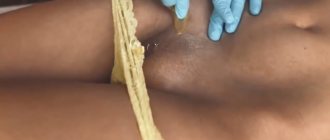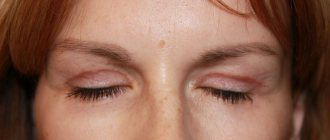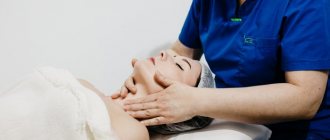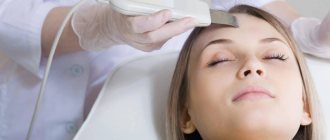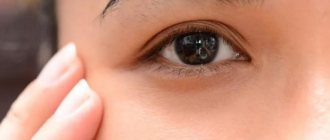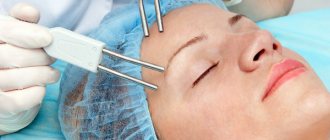Indications and contraindications for plastic surgery after burns
Exposure to high temperatures or chemicals leads to tissue scarring, which impairs the aesthetics and functionality of the burned areas. In this regard, indications for plastic surgery are:
- Wide or retracted scars on the skin. The defect correction method is selected depending on the nuances of the problem. This may be excision of the scar with suturing of the wound or skin grafting.
- The need to restore the areas of the face and neck. It is usually done by transplanting tissue from other areas.
- Reconstruction of eyelids, eyebrows, nose, lips, that is, individual components of the open area. Here you also need a transplant of your own or donor skin.
- Elimination of contractures, that is, restrictions on joint mobility. When choosing a method of operation, the peculiarities of the functioning of the area and the depth of the affected tissues are taken into account.
Plastic surgery is contraindicated for:
- serious diseases of the heart and blood vessels;
- pulmonary pathologies;
- inflamed wound;
- general exhaustion of the body;
- infections.
We recommend reading about cleft lip surgery. You will learn about the causes and symptoms of pathology, types of defects, methods of surgical correction, restoration, and the cost of correcting the defect. And here is more information about plastic surgery of the upper lip frenulum.
Types of plastic surgery
Aesthetic surgery has the following types of operations:
- Free plastic . A skin flap completely separated from the donor area is used.
- Non-free plastic surgery . The defect is repaired with an adjacent skin graft or a piece of tissue on the feeding pedicle. The latter means that the transplanted flap is partially separated from the base. Its nutrition is carried out through an untouched area of skin through which blood supply occurs.
A) 3rd degree burn.
(B) Prompt surgery was performed. To eliminate the defect, material was taken from the skin of the thigh. (C) Six months after surgery. A finger separation procedure was performed. In turn, free plastic surgery can be:
- Vascularized , in which a skin flap with vessels is used. They connect to the general circulatory system.
- Nonvascularized when large areas of skin are transplanted. The transplanted material is taken split, that is, with the outer lobes of the epidermis, or layer-by-layer (for the entire thickness of the skin).
Depending on the time of transplantation, operations are:
- primary , when fresh wounds close;
- secondary , in which the scar tissue that formed several months after the burn is eliminated.
Plastic surgery of burns and scars of the face and body with skin flaps
The essence of the method is to cover the damaged area with flaps of skin tissue either “native” to the patient or donor. To do this, the surgeon first excises the “material” and pastes it onto special paper. Afterwards, the flap is cut into several equal small pieces, which are subsequently applied to the scar area. As a result, tissue epithelization processes are launched, due to which the entire wound heals. By the way, the pieces of the skin flap can be located quite far from each other - at a distance of 3-4 cm - this approach allows, if necessary, to cover large areas of skin if the size of the skin flap is insufficient. Such operations do not last long, but provide a fairly long recovery period.
The method is indicated for large-scale damage to the surface of the skin of the face and body.
Grafts for skin grafting after burns
The material used for plastic surgery varies in thickness:
- up to 0.3 mm, consists of the epidermis and basal layer of skin;
- 0.3 - 0.7 mm, it consists of its upper sections and the main part of the dermis, which gives the transplanted flap high elasticity;
- 0.8 - 1.1 mm, includes all layers of skin.
Donor sites are located on the abdomen, inner thigh, shoulder, and lateral lobes of the chest, if the skin on them is not damaged. It is possible to use tissue from another person, animals or artificial materials. But your own skin for grafting is the best and most commonly used option.
How to do plastic surgery after a burn
In most cases, the operation is performed under general anesthesia. After it has taken effect, the process goes like this:
- Using a transparent film, the size and contours of the problem area are determined. Using the resulting pattern, the boundaries of the donor flap are drawn onto healthy skin.
- A scalpel is used to excise the area of tissue that will be transplanted. The autograft is treated with a special compound and sent to a machine that separates the part of the required thickness.
- Bleeding is stopped on the donor surface. To do this, the wound is sutured or an antimicrobial healing composition is applied. A bandage is applied on top.
- The scar surface is wiped with an antiseptic and dried. The graft is placed in the desired location. Using synthetic threads, its edges are connected to the boundaries of the wound. A sterile bandage is applied on top.
To learn how plastic surgery is performed after a burn, watch this video:
Second degree
When treating second-degree burns, it is important to properly and timely treat the blisters so that new skin begins to form underneath them as quickly as possible. If the treatment is correct, the regenerative processes last no more than one or two weeks, after which pale pink, new skin appears in place of the bubble.
Under unfavorable circumstances, a secondary infection may occur: the blisters fester and become inflamed. Of course, recovery in such cases is difficult, painful and slow, and scars, unfortunately, almost always remain. In order to avoid infection, scar contractures, skin deformation and other serious complications, it is important to carry out local conservative treatment in a timely manner. It is for this reason that therapy should be, first of all, antiseptic in nature: to suppress the development of pathogenic microbes and prevent the appearance of scar formation.
In the first few days after a burn, antimicrobial ointments should be used. The best option is if they contain silver - for example, Agrosulfan cream. Its active component is silver sulfathiazole, which has an effective and broad antimicrobial effect. Of course, with second-degree burns, the pain experienced by patients is much stronger. One of the valuable properties of silver ions is pain relief: usually the pain goes away almost immediately after applying the product or after half an hour. Sulfathizole also helps improve blood circulation, regenerative processes and prevents skin drying. With regular use of Agrosulfan, you can avoid the appearance of scars and cope with unpleasant symptoms in the shortest possible time. In addition, the cream can be used not only by adults, but also by children starting from three months.
Rehabilitation after plastic surgery
Post-operative recovery includes:
- dressings for 10 - 14 days, which are supplemented by local use of glucocorticosteroids;
- taking antibiotics and other medications prescribed by a doctor;
- removal of sutures after 10 - 14 days;
- monitoring the condition and process of graft engraftment;
- refusal of alcohol, smoking, visiting the bathhouse, swimming pool and playing sports;
- protecting the wound from water ingress during hygiene procedures;
- wearing a compression bandage.
After 4 - 6 weeks, you can do physical procedures that will speed up healing and help form unnoticeable scars. The final result of the operation will appear in 6 - 12 months.
Recovery period
Whether the tissue has taken root will become clear within a week after transplantation. During this entire period, the bandage is not removed, it is simply changed regularly. If pus and inflammatory processes appear, this indicates that the body is rejecting the material. Even if it takes root, rehabilitation after skin grafting will be required for several months. The most severe cases require rehabilitation therapy for six months.
During this entire period, the patient will need to follow the doctor's instructions. First of all, several groups of drugs are prescribed to relieve various symptoms that arise during the rehabilitation period. Glucocorticosteroids are prescribed, as well as agents to eliminate inflammatory processes and tissue regeneration.
During the recovery period, the victim needs to use physical therapy. It is necessary to remember the possibility of deformation of joints and tendons during scar formation. Therefore, it is important to start rehabilitation as early as possible. The part of the body on which the transplant was performed must move frequently and a lot. The restorative course of procedures will be selected by the attending physician.
Physical therapy, electrophoresis, and magnetic therapy are used. During physical therapy, special medications are used to soften scars and relieve inflammation. In some cases, additional surgery may be required to correct remaining cosmetic imperfections.
For many patients, skin graft surgery after a burn is the only way to continue a normal life. Despite all the difficulties associated with its implementation, the benefits of transplantation are much greater. It improves the quality of life of burn victims and restores their ability to enjoy life.
Possible complications
After aesthetic intervention, recovery may not go as it should. Complications cannot be ruled out:
- bleeding in the suture area;
- infection in the wound;
- prolonged healing time;
- seromas;
- difficulty moving during skin grafting on limbs;
- formation of a keloid scar;
- impaired sensitivity of the operated area;
- rejection of part or all of the transplanted flap.
Problems can arise due to doctor errors, but more often this happens when the patient behaves incorrectly during rehabilitation.
We recommend reading about the sympathectomy operation. You will learn about the indications for surgical intervention, options, possible complications afterward, and cost. And here is more information about plastic surgery of the hands.
Types of plastic surgery for scars on the face and body
Modern plastic surgery for scars and burns of the face and body today has various techniques for “removing” damage. They can be not only surgical, but also “non-surgical”.
Non-surgical methods of plastic surgery for burns and scars
Non-surgical methods today include laser, ultrasound and injection technologies. They are something between surgical interventions and cosmetic procedures. They are similar to the former in efficiency, and to the latter in their minimal invasiveness. The latter term means that this kind of manipulation is minimally traumatic, it does not affect nearby healthy tissue, does not require sutures and does not even require a hospital stay.
Laser and ultrasound methods involve smoothing out the scar either by removing the upper layers of the epidermis in the damaged area to bring it as close as possible in texture and color to the appearance of healthy skin, or by evaporating it, when under the influence of the energy of a laser beam the liquid contained in the damaged tissue is gradually heated and then removed . The indication in this case is scars that are not rough and relatively small in size.
Injection methods of scar plastic surgery are indicated in the case of retracted scars. Correction here occurs through the introduction of special preparations into the subcutaneous space, which, filling it, return the skin to an even and smooth surface. However, this procedure also involves laser resurfacing, which evens out the tissue in color.
In addition to non-surgical methods, plastic surgery of facial burns and scars also “operates” with endoscopic and classical surgical techniques.
Cost of the operation
The price of plastic surgery varies depending on the complexity. Therefore, it can cost either 20,000 rubles or 100,000 rubles. Before choosing the cheapest clinic, you need to make sure that the surgeon is sufficiently qualified.
You shouldn’t leave the consequences of a burn unchanged, being upset all your life because of your own unattractiveness. Sometimes surgery is a long and difficult journey. But the result is worth it.
Similar articles
- Removal of facial scars, deep scars from acne...
Removal of facial scars, deep scars caused by acne or due to other reasons can be done using laser, surgery and other cosmetic services. Which is better? Read more - Eyebrow transplant: before and after results, how it’s done…
Under the influence of external factors, many people lose their scalp. Eyebrow transplantation can eliminate this deficiency; the procedure is carried out using your own hair. The before and after results are usually great Read more
- Burning lips: causes
Common causes of dry, flaky, and burning lips are allergies, infections, and vitamin deficiencies. Frequent diseases are cheilitis, herpes, seizures and stomatitis. What to do if your lips dry out, peel, or burn. Traditional methods and preparations for burning lips. Read more
- Complications after eyelid blepharoplasty: swelling, eversion...
Complications after blepharoplasty can be expressed as minor bruises and swelling, as well as inversion of the eyelid, scars, scars, numbness, different sizes and lack of results Read more
Postoperative care
The rehabilitation period after surgical treatment of burns takes from 3 to 6 months. It includes three stages:
- adaptation – from the end of dermatoplasty to the first 2 days;
- regeneration – from 3 days after surgery to 2-3 months;
- stabilization – after 3 months. after skin transplantation.
To prevent complications, patients must follow all doctor’s recommendations:
- Dressings must be done within 1-2 weeks. Compliance with sanitary and hygienic rules prevents infectious complications.
- The bandage is not removed until the skin has healed. This stage takes from 4 to 6 days. But in order to prevent detachment of the flaps, dressings are performed for another 7-9 days.
- To restore the skin, the operated areas are lubricated with ointments. Moisturizing antiseptic preparations stimulate healing.
Operated patients complain of severe pain, so they are prescribed local or systemic analgesics. To prevent infectious inflammation and tissue rejection, they take vitamin and mineral complexes with retinol, tocopherol and other bioactive additives.
The transplanted skin is vulnerable for the first 2-3 months. She is practically incapable of self-healing. Therefore, patients are prohibited from visiting saunas, swimming pools, and solariums. You should also avoid prolonged exposure to the sun. The operation is considered successful if there are no complications after 3 months.

